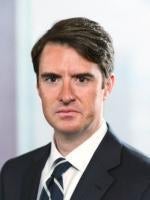In a recent article in the New York Times, David Fahrenthold outlined the big issue facing prosecutors investigating COVID-era fraud: the sheer magnitude of it. The title of the article, “Prosecutors Struggle to Catch Up to a Tidal Wave of Pandemic Fraud,” is dead on.
The various COVID relief programs pumped $5 trillion into the economy, incredibly quickly, and with relatively minimal vetting. Within that enormous and necessary set of economic stimulus packages was likely the greatest amount of fraud committed on the government in the shortest amount of time in history.
COVID relief unleashed a gushing river of free money that few could resist taking from. While certain businesses like restaurants and hotels were instantly and obviously impacted by the pandemic restrictions, few businesses were un-affected and virtually all business owners were concerned about COVID’s impact on their workforces and bottom line. All told, almost 15 million different recipients applied and received 22 million loans and grants totaling almost 5.3 trillion dollars. Many recipients were in desperate need of a cash infusion to keep their employees paid and to keep paying the mortgage or rent in the face of slashed revenue. But some opportunistic fraudsters looking for a quick score simply invented a business or a workforce, applied and collected easy money from the government. It must have felt like taking candy from a baby.
The vast majority of money recipients did not commit fraud but did engage in some amount of handwringing before deciding to apply for a loan or grant. Many recipients were not sure if or how their business would be affected. Every one of them experienced uncertainty and every one of them did not want to let free money that they were entitled to pass them by. Many companies consulted lawyers or accountants to help them navigate the application and certification process, none of them certain about the rules or process – because the government itself was figuring it out on the fly. But before the programs ended, 15 million recipients and many more applicants certified, as required, “in good faith” that “[c]urrent economic uncertainty makes this loan request necessary to support the ongoing operations of the Applicant.”
From my perspective as a lawyer representing those under investigation by the government, the PPP certification standard is quite forgiving and leaves a lot of wiggle room given the genuine uncertainty felt by all during the pandemic. With minimal guidance, millions of businesses made the certification and cashed the checks rather than miss out on the gravy train. Many recipients truly needed the lifeline; many, it turns out, did not. But regardless, genuine uncertainty meant genuine entitlement to the money whether or not business declined, increased or carried right along. And as long as the money was used appropriately, the loan was forgiven – free money indeed!
As with all large fraud investigations, the government – in this case the federal government through various agencies, offices of inspectors general and the Department of Justice (DOJ) – is slow to ramp up. Often likened to a battleship turning, it does so slowly and carefully, but when it has turned and if it’s facing you, it can be terrifying.
The government knows there has been a huge amount of fraud and that tens or hundreds of billions of dollars have likely been received based on misrepresentations during the application process and misrepresentations about how the money was used. The government is good at rooting out fraud having learned many lessons in the health care space, where the government expends a huge amount of money but has an excellent return on investment investigating and prosecuting fraud via the criminal health care fraud statutes and the civil False Claims Act.
Taking the lead is the Pandemic Response Accountability Committee or PRAC, a taskforce made up of 21 Inspectors General and with a staff of about 50. PRAC helps coordinate the oversight efforts of the various agencies responsible for administering loans and grants and for finding fraud.
As in the health care space, pandemic fraud hunters are using leading edge data analytics to identify potential fraud. While the Small Business Administration (SBA), which oversees PPP loans, at one time intended to audit every single loan over $2 million, recognizing the sheer enormity of that task, it is shifting to a risk-based model for scrutinizing loans and loan forgiveness. By cross referencing loan application or forgiveness information or documentation with financial data the government has access to, its data analytic models are able to key in on anomalies or inconsistencies that may warrant further investigation by an Inspector General or the FBI.
PRAC has aggregated all disbursement information on a slick publicly available website in order to seek the public’s help in sifting through the data to find anomalies. Whistleblowers either inside or outside a company can see how much money the company received and are incentivized to file qui tam suits secretly alerting the government to possible fraud and setting themselves up for a windfall in the event the government investigates and makes a recovery.
As Mr. Fahrenthold illustrated in his New York Times article, prosecutors are playing catch-up. To date, there have been many prosecutions of pandemic fraudsters, but for the most part those cases have involved egregious frauds, not a deep probing of whether funds received were necessary, or as the standard should be applied: whether the recipient believed they were necessary in light of then-existing uncertainty.
Those cases will come in time. Qui tam cases, filed under seal, can take a long time to play out while the government investigates. Recognizing that the government needs time and is playing a long game, in early August, Congress and President Biden enacted laws lengthening the time the government has to bring criminal or civil actions against pandemic fraudsters to ten years.
For any recipient of funds that wasn’t quite sure if they qualified but took the money anyway, that’s a long time to wait to see if the government will audit or investigate those specific circumstances. Hundreds of thousands of PPP loan recipients never applied for loan forgiveness, which itself is not proof of fraud, as the loan proceeds may not have been able to be used as required for forgiveness. In those cases, the loans must be paid back. But PRAC has determined that failure to apply for forgiveness may be an indicator that the initial application was fraudulent and may investigate further.
Certain recipients may feel uneasy about having taken the loan and/or having had it forgiven. As it did for overseas tax avoiders, the government may consider an amnesty program to allow the return of funds with a minimal penalty but avoidance of the serious consequences of a bank fraud or wire fraud conviction or the cudgel of the False Claims Act’s treble damages. The government will certainly seek to make an example of companies or individuals for whom it can prove they did not need the funds and there was no genuine uncertainty. The government will want to send a deterrent message for the future and likely will also encourage self-disclosure of ill-gotten funds, promising leniency under the DOJ’s established cooperation credit policies.
Consistently through each successive administration for the last decade, the DOJ has emphasized its interest in prosecuting the individuals who direct a company’s wrongdoing and not just the company itself. In deciding which cases to pursue, the government will be on the lookout for overly aggressive conduct by executives, board members or investors. Lawyers representing whistleblowers know this and will use this as a selling point in pitching an investigation to the DOJ or in filing a qui tam suit.
Many relief fund recipients will continue to wonder if the battleship will ever turn to face them and whether their certifications and specific situation at the times of application or forgiveness will be scrutinized by the government. The government cannot investigate every single loan so it will continue to rely on data analytics, tips from whistleblowers and luck to root out fraud. The government is chasing a tidal wave but their tools will get better and better and they have a long time to do it.
Any company or individual who does feel uneasy about having received loan funds or a loan being forgiven should contact an attorney to best assess the situation and decide on a plan of action or calculated inaction.




 />i
/>i

